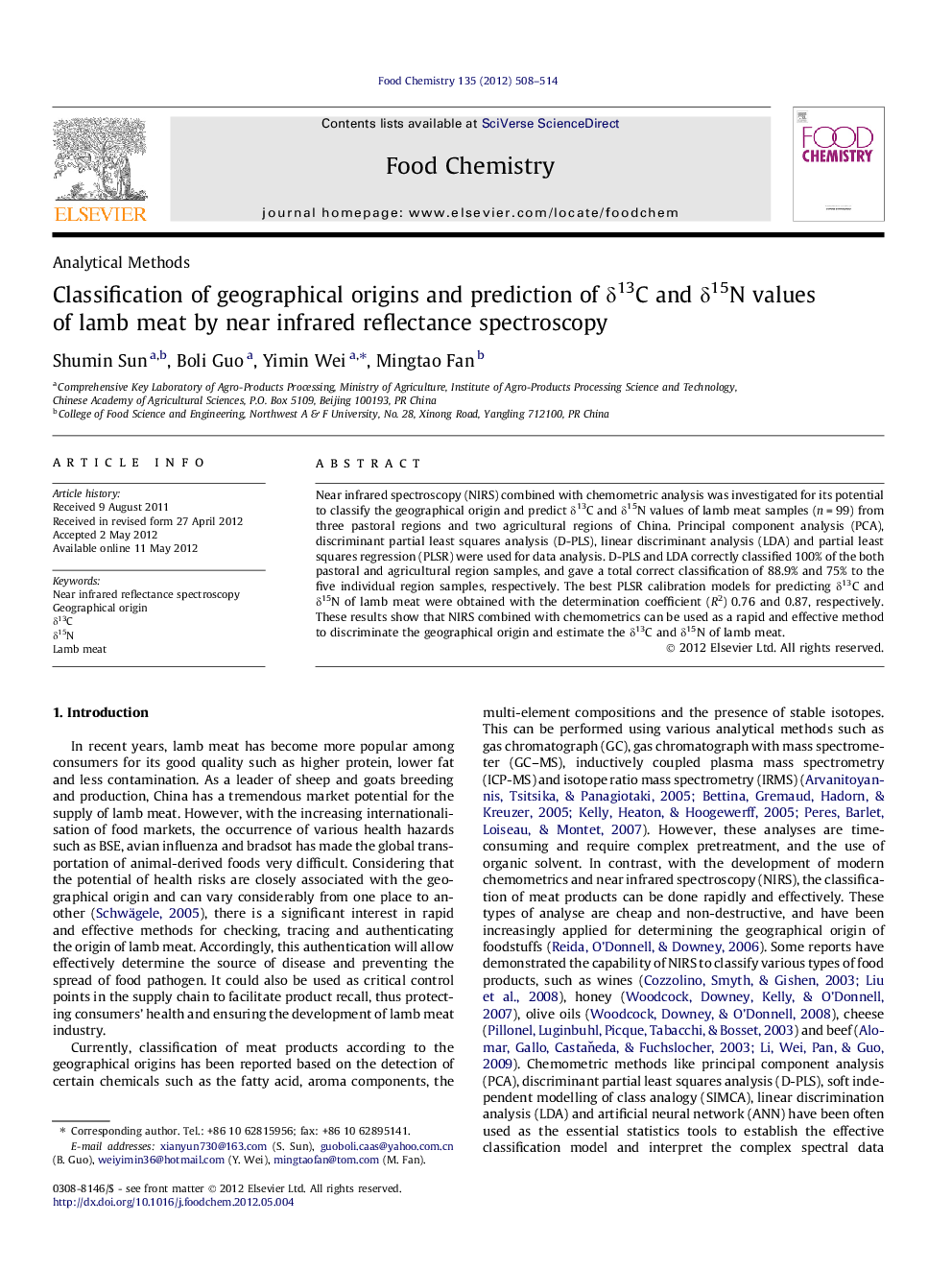| Article ID | Journal | Published Year | Pages | File Type |
|---|---|---|---|---|
| 1185809 | Food Chemistry | 2012 | 7 Pages |
Near infrared spectroscopy (NIRS) combined with chemometric analysis was investigated for its potential to classify the geographical origin and predict δ13C and δ15N values of lamb meat samples (n = 99) from three pastoral regions and two agricultural regions of China. Principal component analysis (PCA), discriminant partial least squares analysis (D-PLS), linear discriminant analysis (LDA) and partial least squares regression (PLSR) were used for data analysis. D-PLS and LDA correctly classified 100% of the both pastoral and agricultural region samples, and gave a total correct classification of 88.9% and 75% to the five individual region samples, respectively. The best PLSR calibration models for predicting δ13C and δ15N of lamb meat were obtained with the determination coefficient (R2) 0.76 and 0.87, respectively. These results show that NIRS combined with chemometrics can be used as a rapid and effective method to discriminate the geographical origin and estimate the δ13C and δ15N of lamb meat.
► Near infrared reflectance spectroscopy. ► Classification of geographical origin of lamb meat. ► Prediction of δ13C and δ15N values of lamb meat.
